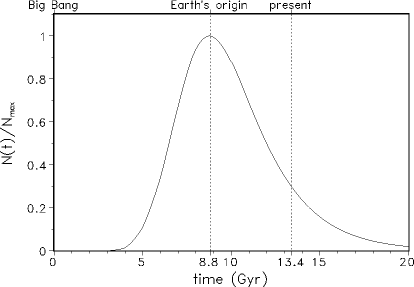 |
||||
| Werner von Bloh
|
|||||
| Maximum number of habitable planets at the time of Earth's origin: new hints for panspermia? |
|
||||
W. von Bloh, S. Franck, C. Bounama, and H.-J. Schellnhuber Potsdam Institute for Climate Impact Research (PIK), Telegrafenberg, P.O. Box 60 12 03, 14412 Potsdam, Germany. New discoveries have fuelled the ongoing discussion of panspermia, i.e. the transport of life from one planet to another within the solar system (interplanetary panspermia) or even between different planetary systems (interstellar panspermia). The main factor for the probability of interstellar panspermia is the average density of stellar systems containing habitable planets. The combination of recent results for the formation rate of Earth-like planets with our estimations of extrasolar habitable zones allows us to determine the number of habitable planets in the Milky Way over cosmological time scales. We find that there was a maximum number of habitable planets around the time of Earth's origin. If at all, interstellar panspermia was most probable at that time and may have kick-started life on our planet. Keywords: Panspermia, habitable zone, Earth-like planets, planet formation, star formation, carbon cycle, biological productivity
Figure: The number of interstellar panspermia events in the Milky Way, N(t), rescaled to Nmax as a function of cosmological time. Dotted vertical lines denote the time of Earth's origin and the present time, respectively. If at all, panspermia was most probable at the time around Earth's origin. |
|||||
|
|
|||||
| Impressum © PIK 2006 |
